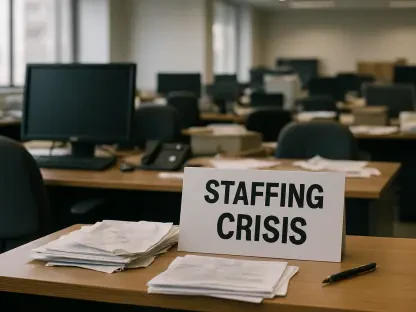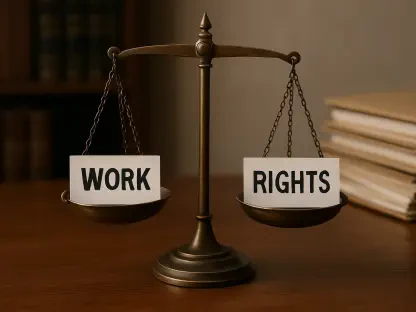In a rapidly evolving business environment, it is crucial for organizations to stay ahead of legislative changes, especially when it comes to redundancy management. Sofia Khaira, an expert in diversity, equity, and inclusion, shares her insights into the forthcoming changes brought by the Employment Rights Bill and how HR departments can prepare.
What are the key changes introduced by the Employment Rights Bill regarding redundancies?
The Employment Rights Bill signifies a significant transformation in handling redundancies, with a primary focus on collective redundancies. Key changes include modifications to the circumstances under which collective consultation should be triggered, potentially affecting how organizations approach downsizing. While much of the specific guidance is still forthcoming, the intention is to offer a more comprehensive framework. These changes will demand from HR a more strategic approach to planning and executing redundancies.
How should HR departments prepare for the changes proposed by the Employment Rights Bill?
Preparation for these changes involves auditing current procedures and anticipating how new thresholds might impact operations. HR departments need to educate themselves on the potential implications, engage in strategic planning, and ensure that managers are trained to handle the emotional and legal complexity of redundancies. It’s about striking the right balance between adhering to new legal frameworks and maintaining a compassionate approach towards employees.
Why is it important for HR practitioners to stay informed about potential future changes in redundancy legislation?
Staying informed is crucial because each shift in legislation can have widespread effects on organizational processes and employee welfare. Redundancy laws directly impact how companies can restructure, affecting many aspects such as morale, operational efficiency, and financial liabilities. By being proactive, HR practitioners can safeguard against costly mistakes and ensure that their organizations remain compliant.
How are larger enterprises and smaller businesses currently responding to the proposed changes in redundancy legislation?
Larger enterprises, equipped with robust HR infrastructures, are already beginning to assess the implications and align their practices with upcoming changes. However, smaller businesses often lack the resources to stay as informed, risking non-compliance when the new legislation is implemented. It’s vital for businesses of all sizes to understand these changes to mitigate risks.
Why is a “wait and see” attitude not recommended for HR when dealing with the upcoming changes in redundancy laws?
A reactive approach can leave organizations vulnerable to violations of future legislation, which can be financially damaging and harm the organization’s reputation. By understanding and preparing for changes in advance, HR ensures smoother transitions and minimizes potential disruption to business operations and employee trust.
In what ways can even minor legal changes demand significant operational shifts within organizations, particularly in handling redundancies?
Even minor legal adjustments require HR departments to revisit and possibly overhaul their current procedures, not just to comply but to operate efficiently under new requirements. These shifts can involve re-structuring employee consultation processes, revising timelines, and increasing oversight to ensure all steps are adequately documented and legally sound.
What are the financial implications for employers if they fail to conduct adequate collective consultation? Can you explain the concept of a “protective award”?
Failing to engage in adequate collective consultation can lead to severe financial penalties, known as “protective awards.” These are substantial fines imposed on employers who either neglect or inadequately perform the necessary consultation process. The proposed increase in the protective award from 90 to 180 days of pay per affected employee underscores the importance of compliance for financial prudence.
How has the law regarding interim relief in redundancy protective award claims evolved in the drafting of the new legislation?
Initially, there was consideration to include interim relief in claims for protective awards. However, this provision was removed, as it posed complex logistical and financial challenges for enforcing re-engagements and burdened employment tribunals with additional claims. The exclusion suggests a pragmatic approach by legislators.
What are the current uncertainties surrounding when collective consultation should be triggered?
One major uncertainty is the specific number or circumstances that will necessitate collective consultation. The previous proposals expanded the requirement beyond single-location redundancies, but further clarification is needed. HR teams need to stay updated on these criteria to ensure compliance from the outset of any redundancy process.
What original legislative proposals were considered for triggering collective consultation, and how have they been modified?
Originally, the proposal included removing the ‘single location’ condition. This would have mandated consultation if a certain threshold of redundancies were met across multiple sites. However, after feedback from the business sector, this criterion was revised, and further clarification is expected in the finalized policies.
Why is it crucial for HR to have visibility over all redundancies across an organization?
Visibility is essential for compliance and strategic planning. By maintaining a clear overview of all potential redundancies, HR can ensure that they meet consultation thresholds and integrate these processes seamlessly with broader strategic initiatives, thereby avoiding legal pitfalls and fostering transparency.
How might the extension of collective consultation across multiple sites create challenges for HR professionals? What specific challenges could arise when dealing with different job categories across sites?
This extension introduces logistical challenges, requiring coordination across decentralized teams. Diverse job categories mean varying impacts and needs, complicating the process and requiring more tailored consultation approaches to manage different expectations and negotiation outcomes.
What potential impact does prolonged consultation have on employees’ personal wellbeing and mental health?
Long consultations can create prolonged stress and uncertainty, negatively affecting employee morale and mental health. The extended period of not knowing one’s employment status can lead to anxiety and decreased productivity, highlighting the need for clear communication and support from HR.
How can HR take a proactive role in the collective consultation process?
HR should lead with confidence, using the process as a tool for transparency and collaboration. By fostering open dialogue, HR can build trust and potentially uncover innovative solutions while ensuring compliance and reducing organizational risks.
What strategic measures can HR implement to manage redundancies effectively? Why should HR collaborate with other departments like legal, finance, and operations?
HR should integrate redundancy planning with strategic business objectives, collaborating with legal, finance, and operations to ensure a holistic approach. This cross-functional cooperation provides a multi-faceted view of potential impacts, aligning redundancy execution with company policies and goals.
How can HR educate other parts of the business on the benefits and value of collective consultation?
By demonstrating how collective consultation leads to better outcomes and trust within the organization, HR can underline its strategic role. Highlighting successful case studies and emphasizing the reduction of risk and improvement in morale can further bolster understanding and support.
What steps can HR take to prepare for future redundancy processes, according to Hannah Johnson’s advice?
Johnson suggests HR should focus on refining processes, training managers for effective communication, providing robust support networks, and leveraging technology to streamline operations. These steps aim to foster an empathetic and efficient approach to inevitable organizational changes.
How can technology help HR in managing redundancy and restructuring processes?
Technology can automate administrative tasks, ensuring consistency and compliance, which allows HR to focus more on personal interactions and support. It also provides platforms for better data management, enabling HR to monitor processes and outcomes effectively.
What specific actions does Matt Monette suggest HR should focus on regarding redundancy procedures?
Matt Monette emphasizes the importance of reviewing current procedures and workforce distribution. By assessing where collective consultations might become necessary and planning accordingly, HR can quickly adapt to the new regulatory demands.
How important is it for HR to continuously monitor legal developments related to redundancies?
Continuous monitoring allows HR to stay ahead of changes, ensuring compliance and safeguarding against risks. It also helps in aligning HR strategies with evolving legal landscapes, thereby enhancing organizational resilience and adaptability.
Do you have any advice for our readers?
My advice would be to actively engage with legislative updates and view them as opportunities to enhance organizational practices. By fostering a culture of agility and proactive learning, businesses can not only comply with new regulations but thrive in an ever-changing landscape.









